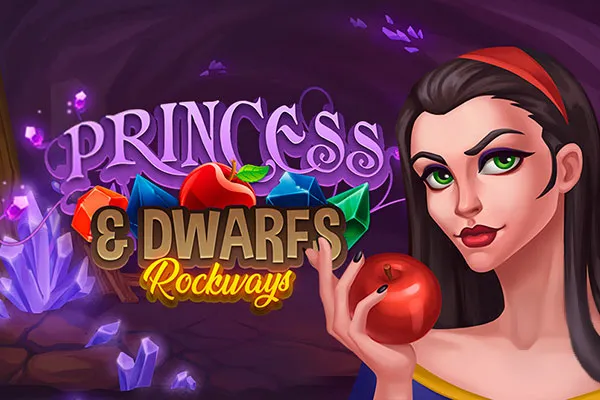Pandit Ravi Shankar: The Maestro Who Introduced India to the World
Pandit Ravi Shankar, a name synonymous with the sitar, was more than just a musician; he was a cultural ambassador who brought Indian classical music to the global stage. This article delves into the life, legacy, and profound impact of this iconic figure, exploring his journey from a dancer in his brother's troupe to a world-renowned virtuoso. For Indian audiences, Pandit Ravi Shankar is a national treasure, and for the world, he remains the face of Indian classical music.
Early Life and Influences
Ravi Shankar was born Robindro Shaunkor Chowdhury in Varanasi, India, on April 7, 1920, to a Bengali Brahmin family. His father, Shyam Shankar Chowdhury, was a lawyer, scholar, and statesman. Ravi's early life was far from the disciplined existence often associated with classical musicians. He spent his formative years traveling with his brother Uday Shankar's dance troupe, absorbing diverse cultural influences and developing a keen understanding of performance.
- Uday Shankar's Influence: Uday Shankar's dance company exposed Ravi to dance, music, and theater from around the world. This exposure broadened his artistic horizons and instilled in him a deep appreciation for cross-cultural exchange.
- Exposure to Music: While traveling with the troupe, Ravi encountered various musical instruments and traditions, sparking his initial interest in music.
- Turning Point: In 1938, at the age of 18, Ravi Shankar decided to dedicate his life to learning the sitar under the tutelage of the legendary Ustad Allauddin Khan.
Training Under Ustad Allauddin Khan
This marked a pivotal moment in Ravi Shankar's life. He left the glamour of the dance troupe and embarked on a rigorous and disciplined training regime under Ustad Allauddin Khan, the founder of the Maihar Gharana (school) of Hindustani classical music.
- The Gurukul System: Ravi Shankar followed the traditional gurukul system, living with his guru and dedicating himself entirely to his musical training.
- Years of Rigorous Practice: He spent years honing his skills, mastering the intricate techniques and nuances of the sitar. This period was characterized by intense dedication and sacrifice.
- Maihar Gharana: The Maihar Gharana emphasizes a blend of dhrupad and khyal styles, known for its intricate melodies and rhythmic complexity. Ustad Allauddin Khan's influence shaped Ravi Shankar's musical style, providing him with a strong foundation in classical purity.
Establishing Himself as a Musician
After completing his training, Ravi Shankar began his career as a composer and performer. He worked for All India Radio in the late 1940s and 1950s, composing music for ballets, operas, and film scores, including Satyajit Ray's Apu Trilogy.
- All India Radio: His work at All India Radio provided him with a platform to experiment with different musical forms and reach a wider audience.
- Film Scores: Composing for films, particularly Satyajit Ray's acclaimed trilogy, showcased his versatility and introduced his music to a new generation of listeners.
- Classical Performances: Alongside his compositional work, he continued to perform classical concerts, gradually establishing himself as a leading sitar player in India.
International Recognition and Collaboration
The 1960s marked the beginning of Ravi Shankar's international breakthrough. His collaborations with Western musicians, particularly George Harrison of The Beatles, catapulted him to global fame.
- The Beatles Connection: George Harrison's interest in Indian music led him to seek out Ravi Shankar as a teacher. This association introduced the sitar and Indian classical music to a massive Western audience.
- Monterey Pop Festival and Woodstock: Ravi Shankar's performances at the Monterey Pop Festival in 1967 and Woodstock in 1969 further solidified his status as a global icon.
- Collaborations: He collaborated with numerous Western musicians, including Yehudi Menuhin and Philip Glass, blending Indian classical music with Western classical and contemporary styles.
- East Meets West Music Foundation: He established the East Meets West Music Foundation to promote cross-cultural understanding through music.
Musical Style and Innovations
Ravi Shankar's musical style was rooted in the Maihar Gharana but evolved over time to incorporate his own innovations and influences.
- Classical Purity: He maintained a deep respect for the traditions of Indian classical music, adhering to the established ragas and talas.
- Improvisation: Improvisation is a key element of Indian classical music, and Ravi Shankar was a master of spontaneous melodic and rhythmic variations.
- Technical Virtuosity: His mastery of the sitar was unparalleled, allowing him to execute complex passages with ease and grace.
- Emotional Depth: His music was known for its emotional depth and expressiveness, conveying a wide range of moods and feelings.
- New Ragas: He created several new ragas, expanding the repertoire of Indian classical music.
Legacy and Influence in India
In India, Pandit Ravi Shankar's legacy is immense. He is revered as a national icon who brought Indian classical music to the forefront of the global cultural landscape.
- Popularization of Indian Classical Music: He made Indian classical music accessible to a wider audience, both within India and abroad.
- Inspiration to Musicians: He inspired generations of Indian musicians to pursue their passion and strive for excellence.
- Cultural Ambassador: He served as a cultural ambassador, promoting Indian culture and values on the world stage.
- Bharat Ratna: He was awarded the Bharat Ratna, India's highest civilian honor, in 1999, recognizing his immense contribution to the nation.
Global Impact and Influence
Beyond India, Pandit Ravi Shankar's influence is equally profound. He is credited with popularizing Indian music and culture in the West and inspiring countless musicians and artists.
- Influence on Western Music: His music influenced Western musicians across various genres, from classical to rock and pop.
- Cross-Cultural Exchange: He fostered cross-cultural exchange and understanding through his collaborations and performances.
- Recognition and Awards: He received numerous international awards and accolades, including multiple Grammy Awards.
- Inspiration to Artists: His life and work continue to inspire artists around the world.
Key Achievements and Awards
Pandit Ravi Shankar's illustrious career was marked by numerous achievements and accolades:
- Bharat Ratna (1999): India's highest civilian honor.
- Five Grammy Awards: Recognizing his excellence in music.
- Ramon Magsaysay Award (1992): For his contributions to international understanding.
- Honorary Knighthood (KBE) from Britain (2001): Acknowledging his services to music.
- Numerous honorary doctorates from universities worldwide.
Personal Life
Ravi Shankar's personal life was as complex and fascinating as his music.
- First Marriage: He was married to Ustad Allauddin Khan's daughter, Annapurna Devi, also a talented surbahar player.
- Relationship with Sue Jones: He had a relationship with Sue Jones, resulting in the birth of Norah Jones, a renowned singer-songwriter.
- Marriage to Sukanya Rajan: He later married Sukanya Rajan, with whom he had a daughter, Anoushka Shankar, also a celebrated sitar player.
Anoushka Shankar: Carrying on the Legacy
Anoushka Shankar has successfully followed in her father's footsteps, becoming a world-renowned sitar player and composer. She has collaborated with leading musicians from around the world and is actively involved in promoting Indian classical music.
- Continuing the Tradition: Anoushka Shankar is dedicated to preserving and promoting the traditions of Indian classical music.
- Innovation and Experimentation: She also embraces innovation and experimentation, pushing the boundaries of the genre.
- Global Recognition: She has received numerous awards and accolades for her music.
Conclusion
Pandit Ravi Shankar's life was a testament to the power of music to transcend cultural boundaries and connect people from all walks of life. He was a visionary artist, a cultural ambassador, and a true icon of Indian classical music. His legacy continues to inspire musicians and music lovers around the world. His contributions to music and cross-cultural understanding will be remembered for generations to come. He remains a pivotal figure in the history of Indian music, and his influence can still be felt today. For India, he is a source of immense pride, and for the world, he is a symbol of artistic excellence and cultural exchange.
Related Pages
- Pakistan vs Bangladesh Cricket Rivalry: Epic Matches You Can't Miss!
- Taj777: India's Ultimate Winning Jackpot Adventure!
- UP Anganwadi Bharti 2023: Apply Now for Latest Uttar Pradesh Jobs on Official Site!
- Mahalaxmi Calendar 2025: Unlock Prosperity, Auspicious Dates & Indian Festivals Guide!
- शिवसेना की ताज़ा खबर: क्या बदलाव लाएगा चुनावी मोर्चा?









